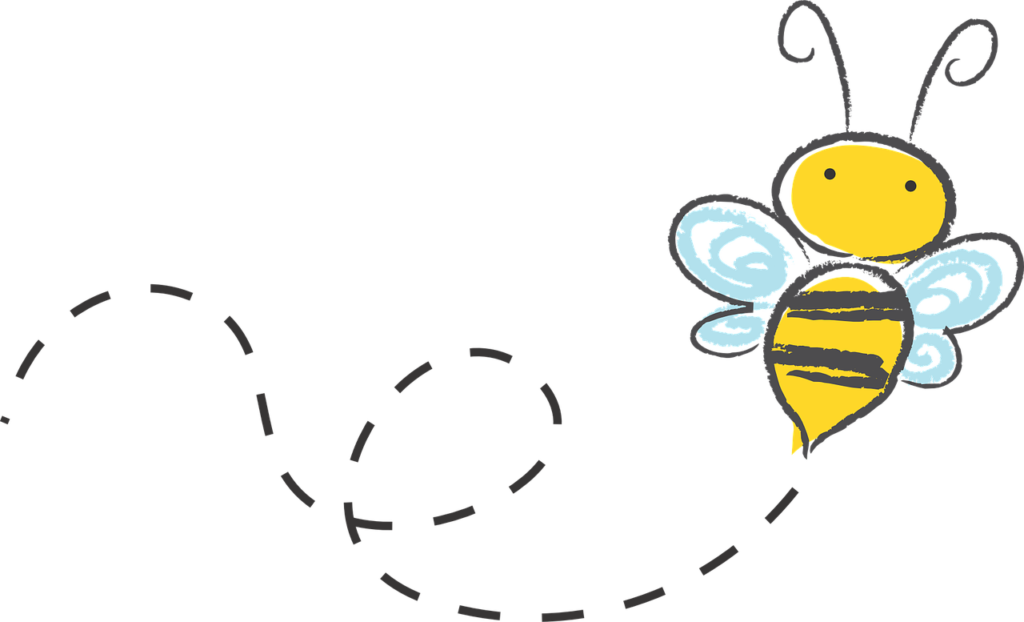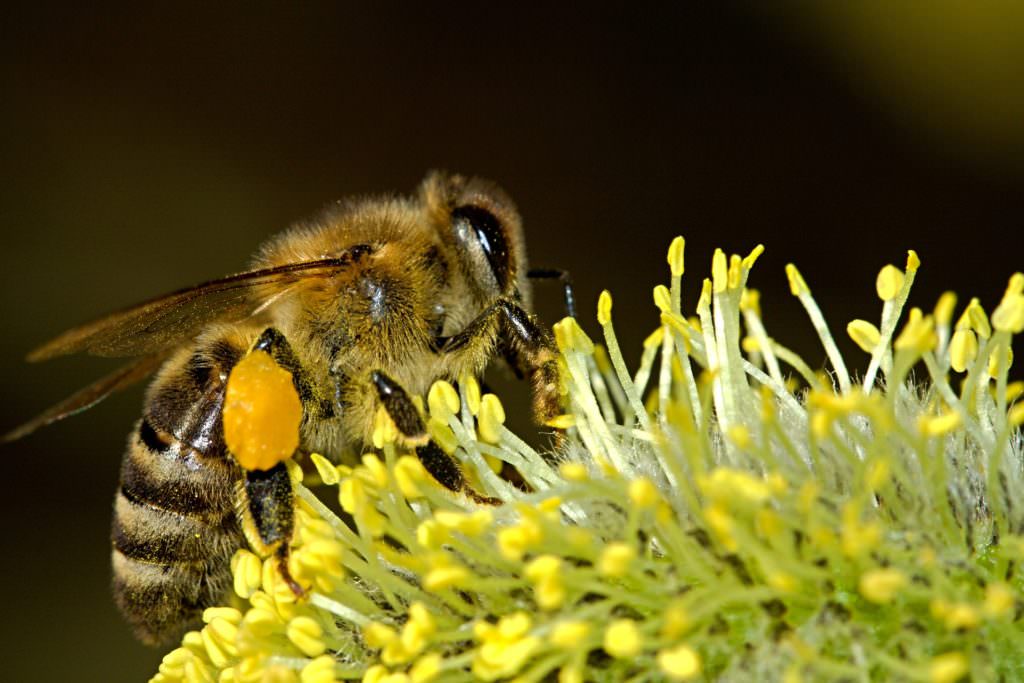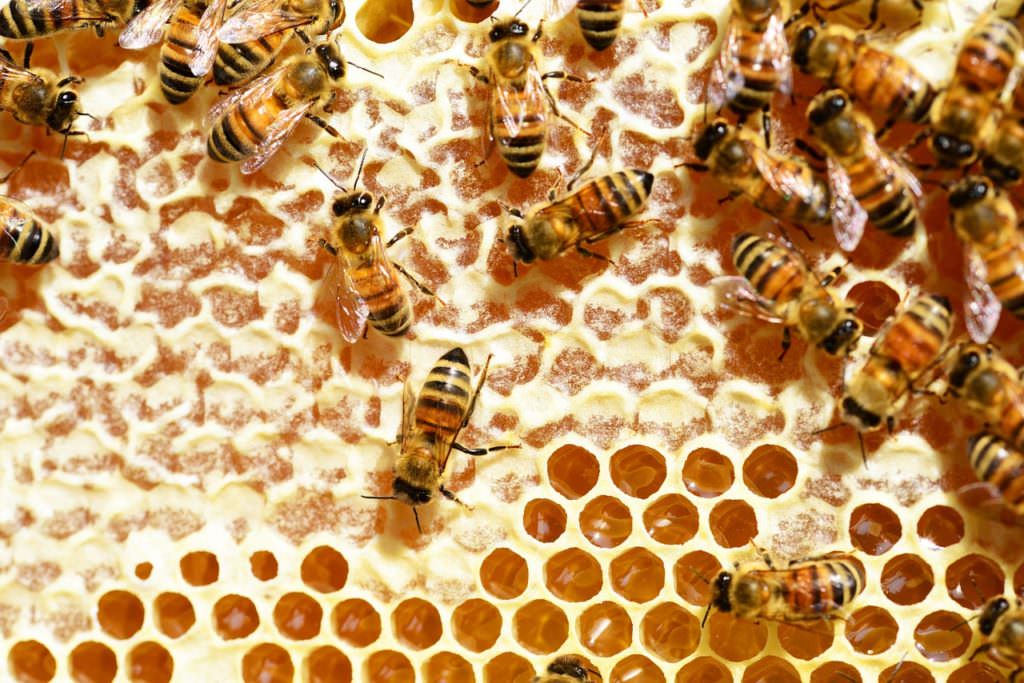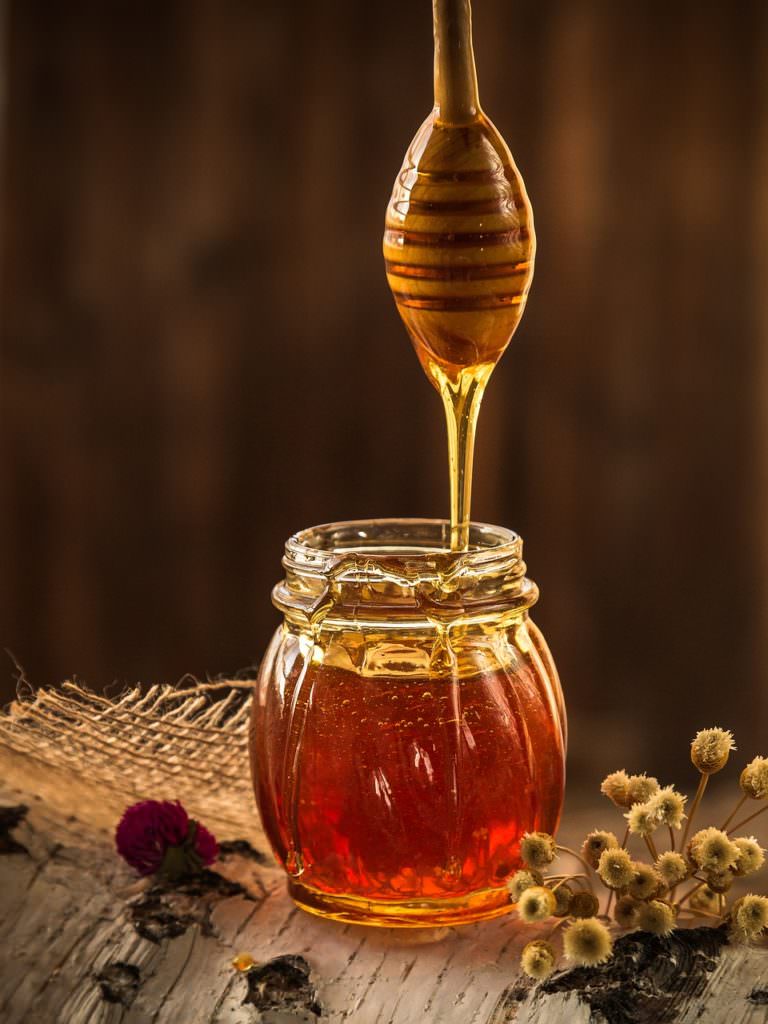In the previous report you read about the life of one of my great aunts inside the hive and how she progressed to be a forager, collecting nectar to produce honey. Well, since then our colony has been very busy foraging and building up our food supplies for winter. We need to have about 20kg of honey stored away to see us through the winter.

When we go foraging, we collect nectar from the flowers, sucking it through our mouth tube into our honey stomach. Once this is full, it holds about 40mg, we return home and pass the nectar to our sisters in the hive. It has been calculated that to bring back enough nectar to fill our winter stores we need to fly over 1 million foraging trips. But that is just for the winter. To keep the colony fed during the busy summer months we need a further 40kg of honey, another 2 million foraging trips. You can understand why we have such a short foraging life, just three weeks, after which we are totally exhausted.
As we visit these millions of flowers, it is wonderful to know that we are pollinating them, resulting in fruits and seeds. Just think of all the creatures that benefit from this food source. Some seeds will produce next year’s flowers, we are a vital part of the cycle of nature.
It is not just nectar we collect; we also need about 20kg of pollen to feed all the young larvae. The pollen provides the protein we need. We also need water to dilute the honey before we consume it. There are some of us who specialise in collecting water and distributing it in the hive to where it is needed.

When we return to the hive with the nectar, we pass it to our sisters waiting near the hive entrance. They transport it to where it is to be stored in the cells of the comb and in the process add an enzyme that converts the sucrose in the nectar into fructose and glucose. The cells all slant upwards at 15 degrees which stops the nectar running out. Nectar is composed of about 40% sugar but to convert this to honey, the sugar concentration needs to be raised to 80%, otherwise it will ferment and not be good to use.
The warmth of the hive and the ventilation provided by fanning with the wings reduces the water content of the nectar until it is thick enough to store long term. The cell is then sealed with a wax cap, ready for when it is needed.

We are not the only ones who enjoy our honey. Sometimes our hives are raided by wasps, and we must fight them off. Mice, woodpeckers and badgers are also fond of honey; they are potential robbers. Beekeepers help protect our hives from them.
However, our biggest loss of honey is that taken by our beekeepers! To be fair, they always ensure that we have enough left for our own use. We fill up the space in the brood boxes with honey and that is enough for our needs. Our beekeepers put more empty frames in boxes, ‘supers’, above the brood boxes and so long as there is nectar available and space to store it, we keep on foraging, much to the delight of our beekeepers. In the autumn they remove the supers and spin the honey out of the combs. The honey is then bottled and sold to the Community residents. The proceeds help pay for the equipment and supplies that is needed to maintain the apiary and hives.
I hope that you have been fortunate enough to taste some of our honey, it is delicious. We harvest quite a lot of nectar from the heather growing on the dunes and that gives the honey a very special taste. It is estimated that to produce one pound of honey we have, collectively, to fly the equivalent of twice around the world and one teaspoon of honey represents the life work of 12 bees. So next time you have some honey, savour and value every drop.


















A bee’s view of life at the Findhorn Apiary – November 2021
In the previous report you read about the life of one of my great aunts inside the hive and how she progressed to be a forager, collecting nectar to produce honey. Well, since then our colony has been very busy foraging and building up our food supplies for winter. We need to have about 20kg of honey stored away to see us through the winter.
When we go foraging, we collect nectar from the flowers, sucking it through our mouth tube into our honey stomach. Once this is full, it holds about 40mg, we return home and pass the nectar to our sisters in the hive. It has been calculated that to bring back enough nectar to fill our winter stores we need to fly over 1 million foraging trips. But that is just for the winter. To keep the colony fed during the busy summer months we need a further 40kg of honey, another 2 million foraging trips. You can understand why we have such a short foraging life, just three weeks, after which we are totally exhausted.
As we visit these millions of flowers, it is wonderful to know that we are pollinating them, resulting in fruits and seeds. Just think of all the creatures that benefit from this food source. Some seeds will produce next year’s flowers, we are a vital part of the cycle of nature.
It is not just nectar we collect; we also need about 20kg of pollen to feed all the young larvae. The pollen provides the protein we need. We also need water to dilute the honey before we consume it. There are some of us who specialise in collecting water and distributing it in the hive to where it is needed.
When we return to the hive with the nectar, we pass it to our sisters waiting near the hive entrance. They transport it to where it is to be stored in the cells of the comb and in the process add an enzyme that converts the sucrose in the nectar into fructose and glucose. The cells all slant upwards at 15 degrees which stops the nectar running out. Nectar is composed of about 40% sugar but to convert this to honey, the sugar concentration needs to be raised to 80%, otherwise it will ferment and not be good to use.
The warmth of the hive and the ventilation provided by fanning with the wings reduces the water content of the nectar until it is thick enough to store long term. The cell is then sealed with a wax cap, ready for when it is needed.
We are not the only ones who enjoy our honey. Sometimes our hives are raided by wasps, and we must fight them off. Mice, woodpeckers and badgers are also fond of honey; they are potential robbers. Beekeepers help protect our hives from them.
However, our biggest loss of honey is that taken by our beekeepers! To be fair, they always ensure that we have enough left for our own use. We fill up the space in the brood boxes with honey and that is enough for our needs. Our beekeepers put more empty frames in boxes, ‘supers’, above the brood boxes and so long as there is nectar available and space to store it, we keep on foraging, much to the delight of our beekeepers. In the autumn they remove the supers and spin the honey out of the combs. The honey is then bottled and sold to the Community residents. The proceeds help pay for the equipment and supplies that is needed to maintain the apiary and hives.
I hope that you have been fortunate enough to taste some of our honey, it is delicious. We harvest quite a lot of nectar from the heather growing on the dunes and that gives the honey a very special taste. It is estimated that to produce one pound of honey we have, collectively, to fly the equivalent of twice around the world and one teaspoon of honey represents the life work of 12 bees. So next time you have some honey, savour and value every drop.